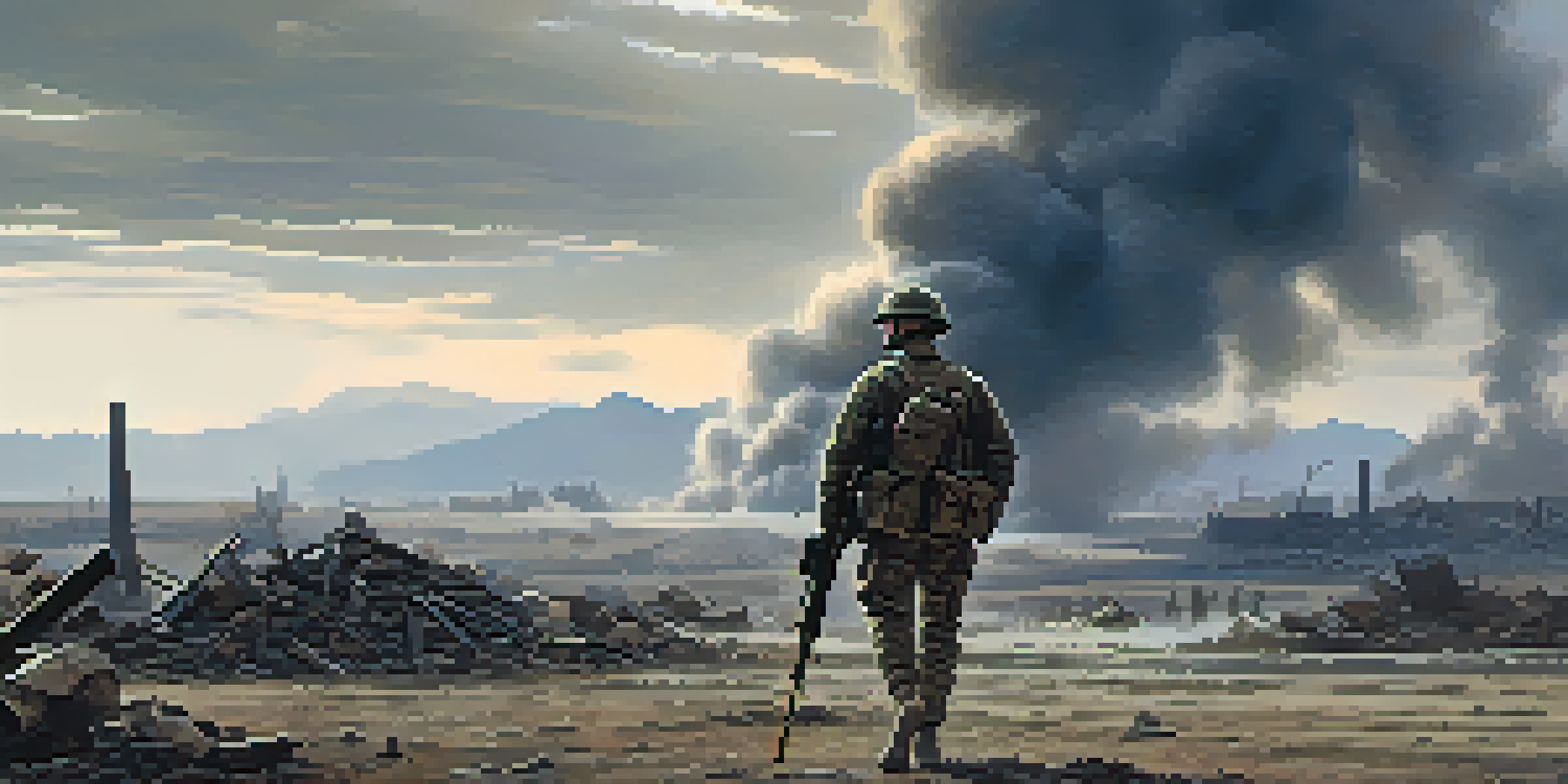The Evolution of War Films: From Glory to Grit

The Birth of War Films: Romanticizing Conflict
War films have been a staple of cinema since its inception, often romanticizing the heroism and valor associated with battle. Early films like 'The Birth of a Nation' and 'All Quiet on the Western Front' presented war as a noble pursuit, focusing on the glory and camaraderie among soldiers. These films shaped public perception, often glorifying military service and overshadowing the harsh realities of war. As audiences were captivated by thrilling narratives, the complexities of conflict were largely brushed aside.
World War II and the Rise of the Epic War Film
The Second World War marked a turning point in war cinema, giving rise to epic films that showcased massive battles and heroic sacrifices. Titles like 'Saving Private Ryan' and 'The Longest Day' highlighted both the bravery and the brutal nature of warfare, captivating audiences with their grand scale. These films often aimed to honor the sacrifices made by soldiers, combining action-packed sequences with emotional storylines. However, while they offered a more nuanced view than earlier films, they still retained an element of glorification.
War Films Evolve with Society
The portrayal of war in films has shifted from glorification to a more nuanced examination of the complexities and moral dilemmas faced by soldiers.
Vietnam War: A Shift Towards Realism
The Vietnam War profoundly impacted war films, leading to a significant shift towards realism and anti-war sentiments. Movies like 'Apocalypse Now' and 'Platoon' exposed the chaos and moral ambiguity of conflict, painting a stark contrast to previous glorifications. These films not only depicted the physical toll of war but also explored the psychological effects on soldiers, making audiences question the very nature of heroism. This era marked the beginning of a more critical examination of war, moving towards gritty and authentic portrayals.
The 1980s and the Return of Action-Driven Narratives
In the 1980s, war films experienced a resurgence in action-driven narratives, often focusing on individual heroics and military prowess. Films like 'Rambo: First Blood Part II' and 'Full Metal Jacket' reinvigorated the genre with intense action sequences and charismatic leads. While these films maintained some elements of realism, they often leaned into escapism, presenting war as a battleground for personal glory. This era reflected a cultural fascination with military might and showcased stylized violence that appealed to a broader audience.
Technology Transforms War Filmmaking
Advancements in technology have enhanced the realism and emotional impact of war films, allowing for more immersive storytelling.
Modern War Films: Grit and Complexity
Today’s war films have evolved to portray the complexities of modern conflicts, often focusing on the moral dilemmas faced by soldiers. Films like 'American Sniper' and 'The Hurt Locker' dive deep into the emotional and psychological scars left by war, providing a more intimate look at the lives of those affected. These contemporary narratives challenge viewers to understand the personal sacrifices behind the headlines, often blurring the lines between heroism and tragedy. This shift reflects a society grappling with the consequences of war, emphasizing empathy over glorification.
The Role of Technology in War Filmmaking
Advancements in technology have transformed how war stories are told on screen, enhancing both realism and visual impact. High-definition cinematography, CGI, and immersive sound design allow filmmakers to create gripping, lifelike battle scenes that draw audiences into the action. This technological evolution not only heightens the emotional engagement but also serves to depict the complexities of modern warfare, including drone strikes and cyber warfare. As these tools continue to develop, the way we perceive and understand war through film will evolve as well.
Streaming Opens Diverse Narratives
The rise of streaming platforms has made varied war stories more accessible, expanding the scope of narratives and fostering a deeper understanding of conflict.
War Films in the Age of Streaming
The rise of streaming platforms has changed the landscape of war films, making diverse narratives more accessible to audiences worldwide. Series like 'Band of Brothers' and films such as 'Beasts of No Nation' showcase stories from different perspectives, expanding the scope of war cinema beyond traditional narratives. This shift allows for deeper explorations of conflict, focusing on varied experiences that often go unheard in mainstream cinema. As a result, viewers are exposed to a broader understanding of war’s impact, fostering a more nuanced conversation around the subject.
The Future of War Films: A Continuing Evolution
As society continues to evolve, so too will the portrayal of war in film, adapting to reflect contemporary issues and values. Future war films may delve into even more complex themes, such as the impact of technology on warfare and the ethical implications of conflict. With filmmakers increasingly embracing diverse voices, we can anticipate a richer tapestry of stories that highlight not only the horrors of war but also the resilience of the human spirit. Ultimately, the evolution of war films will continue to challenge and inspire audiences, encouraging reflection on the realities of conflict.